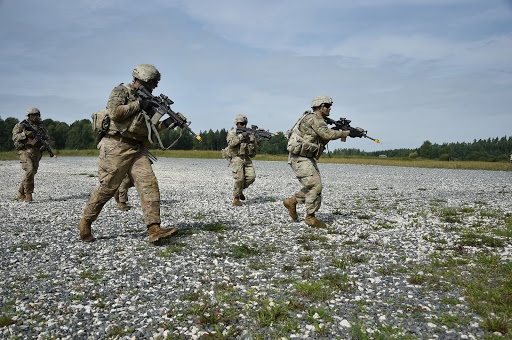Are you wondering what sorts of activities and therapies are done in an inpatient treatment program for PTSD in Salt Lake City, Utah? While we can’t speak for everyone, we can tell you what an average day looks like in our Men’s Strong Hope Program and Women’s Strong Hope Program.
Inpatient PTSD Program Schedule
7:30 Wake up
8:00 Shower, hygiene
8:15 Breakfast
9:00 Group therapy (CPT / DBT)
10:00 Expressive therapy (art, music, or pet therapy)
11:00 Outing (hiking, climbing gym, National Ability Center)
12:30 Lunch
1:30 Exercise
2:30 Alcoholics Anonymous / Group Therapy
3:30 EMDR or individual therapy (weekly)
5:30 Dinner
6:15 Free time
10:00 Lights out
How do these activities help with PTSD?
Each activity is designed to help those with PTSD process and recover from their trauma. PTSD-focused therapy provides skills and tools needed to evaluate and regulate emotions, recognize and overcome triggers, and provide healthy coping mechanisms.
Group Therapy Sessions
Group therapy sessions cover many different topics; anything from working through trauma, identifying triggers, dealing with anger, setting boundaries, safe and unsafe people, and building healthy relationships could be covered. In the groups, each person will be given a workbook to help them follow along and record their thoughts on each subject. The workbooks contain exercises to strengthen skills and build upon what’s talked about in each group. The purpose of the groups, and the whole program, is to give clients the skills they need to transition into normal society and deal with their trauma.
What is CPT?
Cognitive Processing Therapy (CPT) is a group-based therapy that helps patients identify errors in thought processes that cause them distress. In erroneous trauma processing, the brain can get stuck in a pattern of thinking about the trauma in a certain way, like being stuck in a rut. Trauma-focused CPT helps patients process trauma in a healthy, realistic way.
What is DBT?
Dialectical Behavioral Therapy (DBT) is a group-based therapy technique that focuses on changing patterns of negative thoughts and behaviors and improving relationships and stress management skills. Trauma-focused DBT therapy is found to be especially helpful in helping those with Borderline Personality Disorder.
Outings
The Strong Hope patients often go on outings within the community to burn off some steam. These outings can include Fit to Recover, a workout program that involves rock climbing, volunteering in the community, or visiting the National Ability Center. One of our five-star Google Reviews mentioned the outings as a plus: “I was in the Strong Hope program. I would recommend any current or past service member that might be struggling to go through the process. The staff is very professional and actually care about helping you with whatever issue you might be struggling with. The facility is nice and the outings were great. I have gained a new positive attitude going forward with life. Thank you SLBH and Strong Hope!”
EMDR
Eye Movement Desensitization and Reprocessing (EMDR) is an evidence-based therapy technique used in PTSD recovery in which the patient repeats aloud the story of their trauma while following a therapist’s hand motions back and forth with their eyes. EMDR allows the client to think through an experience fully while mimicking the REM sleep eye movement pattern, allowing the brain to rewire the traumatic memory and process the event.
Alcoholics Anonymous
Many clients of the Strong Hope Program struggle with substance abuse. AA’s 12 Step Program helps servicemembers and veterans overcome patterns of turning to substances to alleviate their PTSD symptoms. Salt Lake Behavioral Health also has an addiction recovery unit, Courage to Change.
Psychodrama for PTSD
Psychodrama is a creative group therapy modality in which patients act out events with others standing in for key players in the event. Placed back in a stressful situation, the patient is able to examine and express feelings that have been under the surface. Psychodrama can be used for recovery from PTSD.
Outcomes
Strong Hope’s program outcomes indicate that this combination of programming, including therapy, exercise, outings and group therapy, reduces symptoms of PTSD.
92% of Strong Hope patients demonstrate statistically meaningful improvement upon discharge from our program.
Testimonial
Take a look at the following Facebook review left about our unit: “Went to the program through Tricare into the Military Male PTSD unit. Got to the unit during night time and felt obviously scared and nervous out of my mind. Never thought a ‘normal guy like me’ would need to be at a place like this. But the thing is the staff, from the receptionist to the doctors, never made me feel crazy. They created an environment perfect for working out the kinks we all get in life. The individuals that worked with me while I was a patient on my unit… Changed. My. Life. The nurse tech was possibly the most professionally friendly person I’ve ever met in my life. The other nurse tech served as a role model and guide through all of these new experiences. The therapists set the standard for all other therapists to follow…Went for about a month and then re-integrated to a more colorful meaningful life.”
For more information about our Men’s Strong Hope Program, our Women’s Strong Hope Program or any of our trauma treatment services in Salt Lake City, Utah, contact us today.

